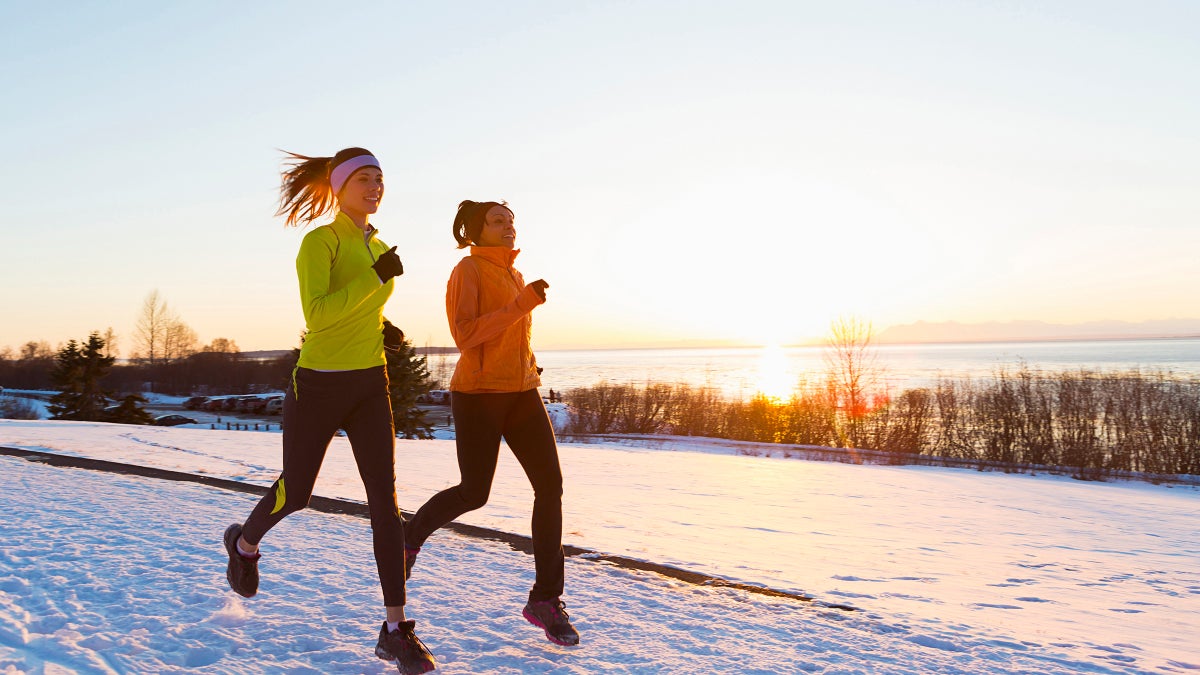
For all our hand-wringing in November, winter finally came in December. Outside editors and contributors took full advantage of fresh snow over the holiday season with these pieces of gear.
Chaco Ramble Puff ($80)
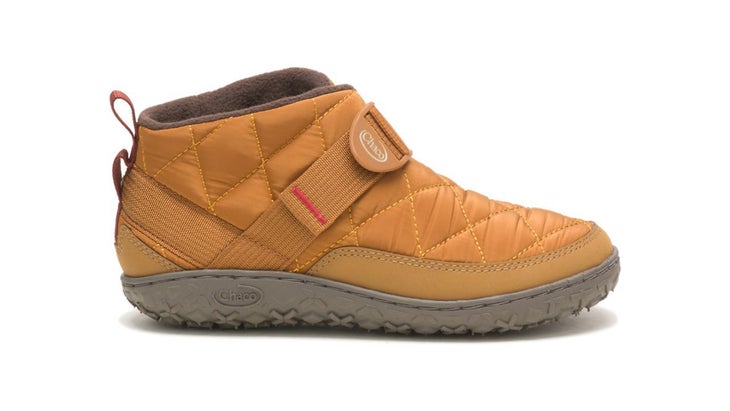
I initially had my doubts about these quilted moccasins—they looked a little too chichi for my tomboy style. The stitching reminds me of a Chanel purse. But they were a gift, so I stuck my feet into the fleece liner, cinched the strap until they were snug, and headed outside to shovel the snow in front of my door. Then I kept them on to drive my teenager downtown. And that afternoon, completely forgetting I had them on my feet, I took a three-mile walk around my neighborhood’s icy sidewalks. Aside from any real exercise or fancy occasion, these are now the winter shoes I wear most days, all day through. Water-resistant, roomy, comfortable, and lightly lugged on the bottom, the Ramble Puff are a perfect slip-on for the season. —Tasha Zemke, copy editor
Theragun Mini and TheraOne Revive CBD Body Balm ($199 and $65)
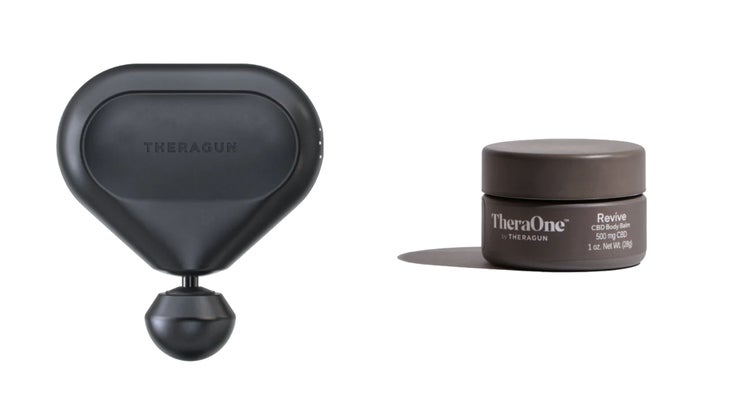
In December, I moved from New Mexico to New York and it required a three-day drive. Each night after logging more than eight hours behind the wheel, I used the Theragun Mini to ease the tightness in my back and shoulders. It weighs less than two pounds, so I was initially skeptical of its power. My doubts faded when I finally used the Mini, which has three speeds (1,750, 2,100, and 2,400 percussions per minute—2,100 is my jam) and is easy to use with just one hand. I often used it in conjunction with TheraOne’s Revive CBD body balm ($65). The paste has notes of turmeric and menthol, each of which has a gentle scent, unlike some other athletic balms. Thanks to the combo I woke up loose each morning, ready to hit the road. I’ve never been able to justify packing a full-size massage gun for trips—they’re often too bulky and heavy. This combo changes the game. —Jeremy Rellosa, reviews editor
PNW Components Rover Hip Pack ($69)
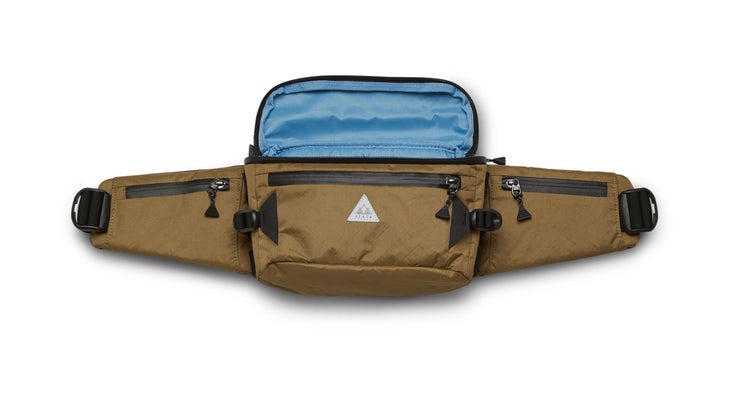
This hip pack has been my favorite option for longer mountain bike rides. I like the zippered hip pockets and the ventilated mesh back panel, but what I really love is the roomy main compartment. It fits a light rain jacket, multi-tool, spare tube, pump, tire lever, and a couple granola bars. During an unexpected deluge in northern California, a neoprene-padded pocket on the outside of the main compartment kept my baby completely dry. It also comes with a removable water bottle holder, which I appreciated when I needed to pack some extra hydration … and when I didn’t. —Kelly Klein, associate editor
Rab Primaloft Gloves ($25)
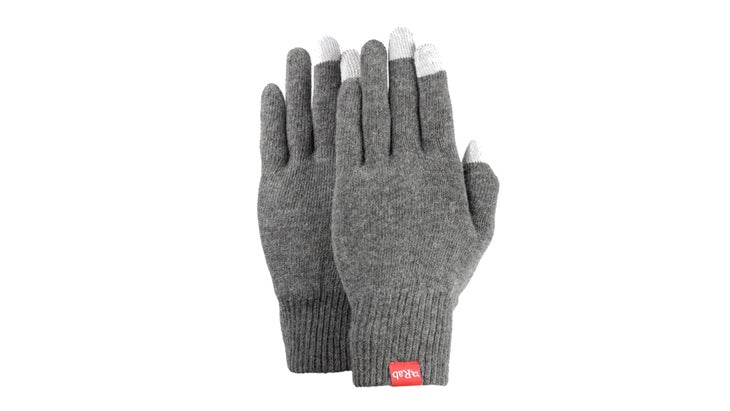
I’ve amassed more than a dozen pairs of liner gloves in my years-long search for the perfect pair. Then these showed up last month and I feel like I finally found the just-right option. Rab uses a medium-thick and highly-insulative blend of polyester and merino wool, which makes them warm enough on their own for all-day hikes below freezing. I even used them for a hunt in temps that approached zero for part of the day. I was worried the extra girth compared to some liner gloves might hurt their dexterity, but I can easily grab zippers, open my phone to shoot photos (each hand has three touch-screen compatible fingers), and do nearly everything I would with bare hands. —Jakob Schiller, contributing writer
Method Bead Grip 704 Wheels ($270 per-wheel)
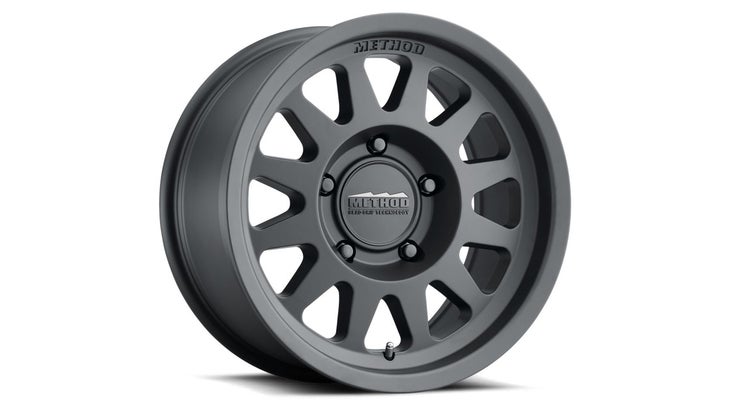
Over the Christmas break my wife and I took a road trip through southeast Utah to do some desert camping. To access one particularly beautiful spot we drove 30 miles down a dirt road that featured deep sand, melting snow, plenty of washboard, and some light-duty rock crawling. We were in my Tacoma but as a precaution I aired down my all-terrain tires, which not only gave me more traction, but also improved the ride quality. I wasn’t worried that a tire would pop off the rim and ruin our trip because I’m running Method’s 704 wheels that use what the company calls “bead grip technology.” That just means that the area where the bead sits in the wheel is reinforced with grabby grooves and oversized humps that work together to keep the bead in its place, even when the deflated tire is getting beaten up and pushed around. Since I spend a lot of time off road, that extra dose of confidence is worth the investment. —J.S.
Panaracer GravelKing Slick Plus Folding Gravel Tire ($60)

All road bikes are gravel bikes these days, right? That’s the mantra of the bicycle industry, which now outfits even the fastest, most aerodynamic racing road bikes with extra-wide tire clearance. But there’s still one element that required to make a road bike suitable for off-road riding: the right tire. This fall I put a pair of 32c Panaracer GravelKings on my Canyon Ultimate Disc road bike, transforming it from a Tour de France racing machine into a trail-worthy rig. Colorado’s unseasonably dry and warm fall allowed me to explore miles of paths, trails, and gravel farming roads near my house, and the GravelKings only punctured once—when I ran over a sheet metal screw. The tires have low enough rolling resistance to take into a road race, and they are bomber on light to medium-grade dirt. While I’d still choose a 40-milimeter tire and a gravel bike for the roughest trail, the GravelKing Slick Plus is an easy way for gravel-curious roadies to get dirty. —Fred Dreier, articles editor
JoGo Coffee Brewing Straw ($25)

Long ago, I switched to Starbucks Via for my backcountry coffee fix. It was light, easy, didn’t require extra gear, and wasn’t too shabby in the taste department. But I’ve found a new solution that rivals the Via’s taste but without the single-use packaging—the JoGo straw. The concept is simple: it’s a metal straw with a mini filter that screws onto the end. Just plop a spoonful of your favorite grounds into a cup, top with hot water, and steep for a few minutes. Then swirl your brew with the JoGo and start sipping from the rubberized mouthpiece that prevents lip singe. It’s cowboy coffee, but elegant, because the filter prevents grounds from being sucked into your mouth. At first I was turned off by sipping my coffee from a straw, but I quickly got over it. The JoGo lets me travel a little bit greener and also saves me some cash because I can just pack some coffee from home. —Kristin Hostetter, editorial director, Outside Business Journal
Dynafit TLT8 Expedition CR ($750)
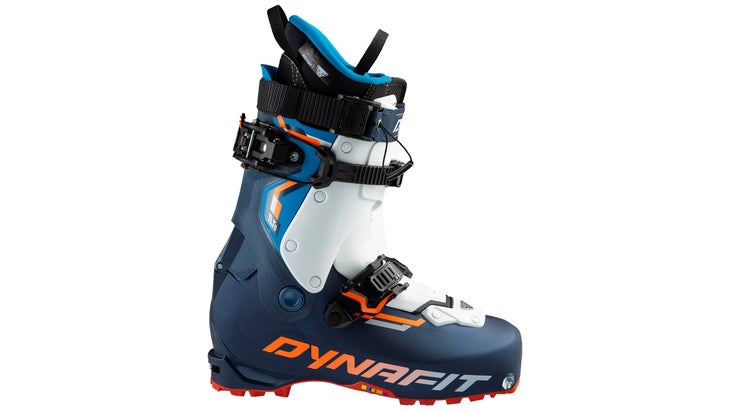
I’ve been skiing in the Dynafit TLT8 Expedition CR boots for the past month. At just under 2.5 pounds, each boot is a pound lighter than what I skied in last year. And, because they aren’t full-on ultra-light ski-mo race boots, I can still ski normally on the way down. I’m a huge fan of how the top buckle doubles as a lever to switch from ski to walk mode—it’s one less thing I have to fiddle with during transitions. —Matt Skenazy, features editor
Skida Snow Tour ($22)
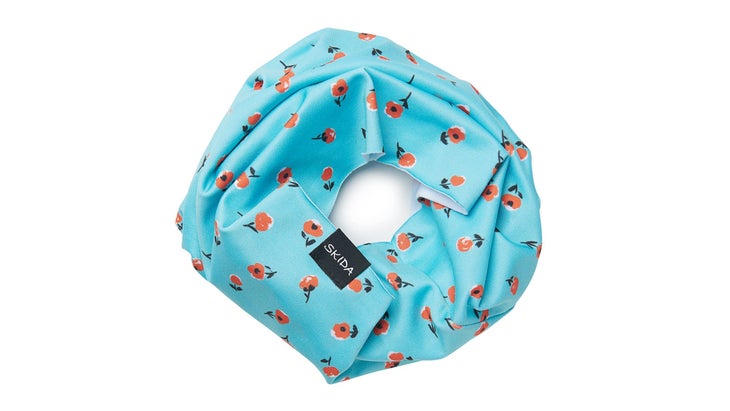
Neck tubes don’t always have a long shelf life. They get sweat-soaked and sun-bleached, used as snot rags, and shoved wet in the bottom of packs. I’d argue they’re one of the more abused items of clothing, up there with socks and underwear. Which is why I’m so pleased with my Skida Snow Tour, which has survived as my go-to neck protection for going on five seasons—and is still as good as new. It’s lightweight enough for uphill travel, but has a thin, soft fleece backing that offers just enough coziness on cold, windy days. —Abigail Barronian, associate editor
The North Face Steep Patrol Futurelight Glove ($150)
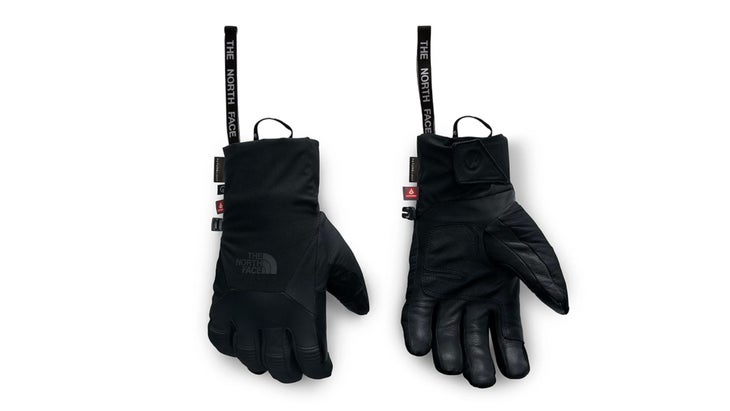
I’ve always been a mitten person. I have cold hands, and the dexterity provided by independent finger sleeves never seemed worth the risk of my digits becoming unusable bricks of ice halfway up the lift. But I skied several days in this glove during December—on the downhill after a couple frigid hikes, on the bunny slopes teaching kids to pizza, and on a full day of chilly lift-serviced turns—and I’m a convert. Thanks to soft, durable goat leather, a waterproof Futurelight insert, and a fleece lining, my hands were toasty and bone-dry at the end of every day. The curved construction of the fingers made adjusting buckles a breeze, and touch compatibility meant I didn’t have to bare my hands to figure out where my friends had popped out of the trees. When I did take them off, the oversized pull-on loop and Velcro cuff made them easy to get back on. My only quibble: the wrist leash snapped on day three. —Maren Larsen, podcast producer
Outdoor Research Helium Down Hoody ($279)
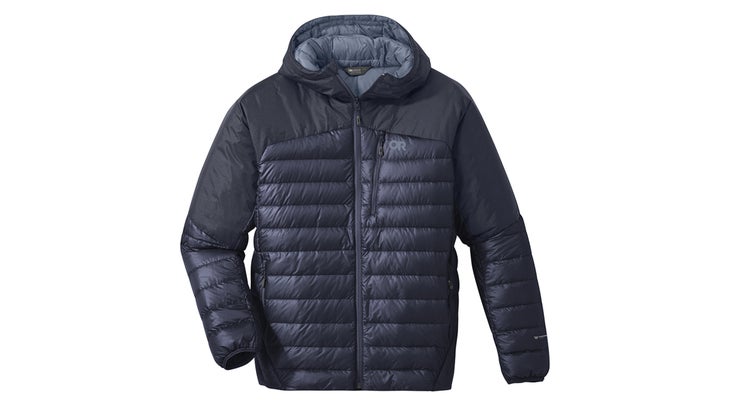
For the past few months, this 800-fill jacket has been my go-to jacket for cold nighttime activities, and for layering under my ski shell on the chilliest of days. What has impressed me the most is the warmth it provides without being restrictive—the standard cut is great for moving freely. I’m also in love with the reinforced, waterproof nylon shoulders and neck, which protects these critical areas from punctures and abrasion. It’s a feature I will henceforth always require on my puffy coats. —Evan Grainger, assistant video producer
Dovetail Workwear Britt Utility Pants ($109)
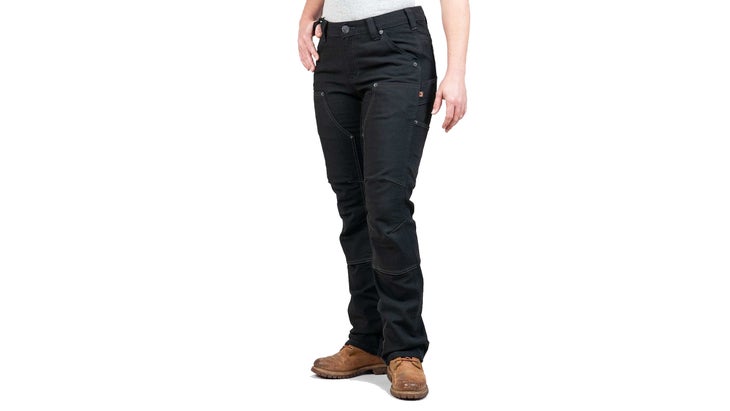
I initially got a pair of Dovetail Workwear’s Britt Utility Pants in black canvas for my job on a backcountry trail maintenance crew last year, but they’ve since become my favorite all-around pants. Besides having a bajillion pockets and being durable as hell—a year of dirt, power tools, and mileage didn’t leave a mark—they’re so comfortable that they’re still in heavy rotation even though I have an office job now. They’re my go-tos for the climbing gym and working on my van, and look cute enough for running errands or getting post-climb drinks with friends. —Miyo McGinn, editorial assistant
Smartwool Merino 150 Glove ($30)
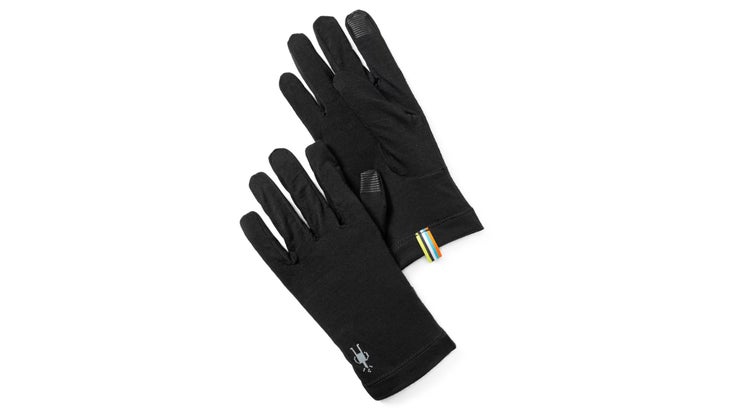
The best running gloves provide just enough insulation to keep you from freezing while you warm up, and enough breathability to release body heat and wick away sweat for the rest of the run. These thin, lightweight Smartwool gloves do just that. The merino provides warmth against my skin and wicks sweat, while the 13 percent nylon core helps with durability (this is my second winter with this pair and they still look and feel new). Plus, I don’t have to take them off to check my phone or take a photo of the scenery, thanks to the touch-screen compatible patches on the thumb and index finger. As temps dropped in December, I found myself reaching for these on any run between 50 and 30 degrees Fahrenheit, and used them as a base layer under wind-resistant mitten shells on colder days. —Jonathan Beverly, senior running editor
Decked X Uncharted D-Bag Emergency Kit ($650)
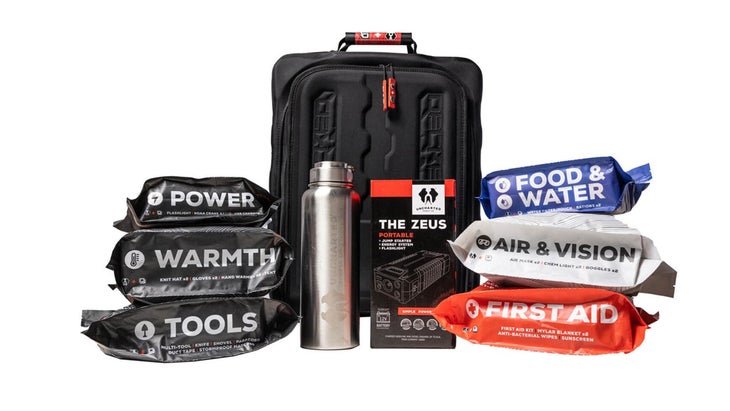
I’m a big fan of Decked, and have used their drawer system in two trucks now. I love being able to organize my gear based on the season (whether it’s time for mountain biking, hunting, or skiing), but also have a place to keep things that live in my truck at all times, like vehicle recovery gear. The company recently sent me their new D-Bag Emergency kit to check out, and it’s one of the coolest and most complete survival/emergency kits I’ve seen. They partnered with Uncharted Supply Co so each soft-sided bag includes one of the brand’s Seventy2 Pro Survival systems, along with a Zeus portable jump starter. You get everything you need for two people to survive an emergency situation for 72 hours, including a Sawyer Mini water filter, 2,400 calories worth of energy bars, 100 feet of paracord, a multitool, fixed-blade knife, air filtration masks, waterproof matches, a ferro rod, a complete first aid kit, and most importantly, detailed instructions on how to use it all. With the portable jump starter you have an amazing emergency kit that fits perfectly in your truck’s Decked drawer or stows easily in the trunk of your car. Whether you’re prepping for a natural disaster, or just want something in your vehicle for emergencies, this kit has you covered. It now lives permanently in the back of my truck. —Bryan Rogala, contributing writer
Janji Mercury Track Pant ($94)
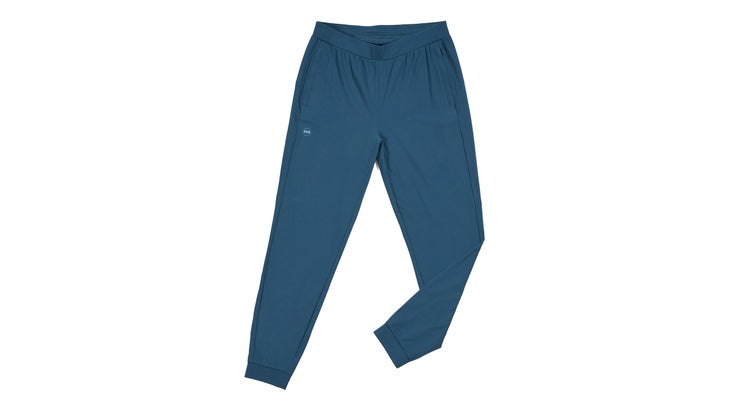
Winter means many different things for me, including but not limited to skiing, snowy trail running, and strength sessions in my minimally heated home gym. The Mercury Track Pant factors into all of them. These bottoms were designed for cold-weather running miles, and indeed, they’re perfect for the task. Think: a relaxed jogger cut, hip pockets that fit gloves or keys, and a soft, stretchy brushed-polyester construction that’s cozy (without the stifling warmth of fleece), and more breathable than bottoms equipped with wind-resistant fronts. All of these things also make them great for early-morning gym workouts when the house is still frigid. I’ve even found myself reaching for them when exercising is not on the menu at all, simply because they feel like pajamas—for example, when a pre-dawn ski lap runs late and I arrive home without time to shower before logging into the virtual office. I may or may not be wearing them right now. —Ariella Gintzler, senior editor
Shredly Cascade Pant ($135)
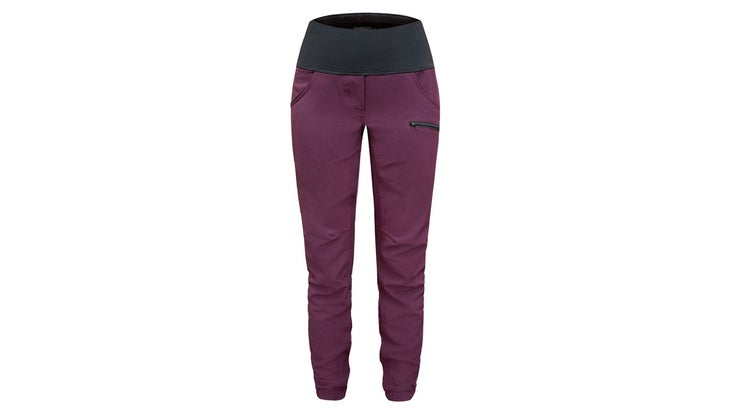
Trail pants have officially mainstreamed in mountain biking, and even summerweight offerings like the Cascade Pant from women’s cycling apparel company Shredly solve cold-weather riding problems. Worn over bike shorts or tights, they provide extra wind-blocking and insulation and spare me from having to rock that awkward leggings-and-baggies look. The stretchy, yoga-style waistband is snug and comfortable, while the legs taper for a slim profile that’s still loose enough to fit over knee pads or leggings. A DWR finish provides protection against showers and puddles, and a zipper pocket holds keys and other essentials while you’re fumbling to get your bike off the rack. But three features really differentiate the Cascades from the competition: a size range that goes from 00 to 24, a variety of fun and unique patterns like the “Shanna” floral design, and a more-palatable price tag than similar offerings from other brands (which run closer to $170 or $180). —Gloria Liu, contributing writer
Biolite FirePit+ ($300)
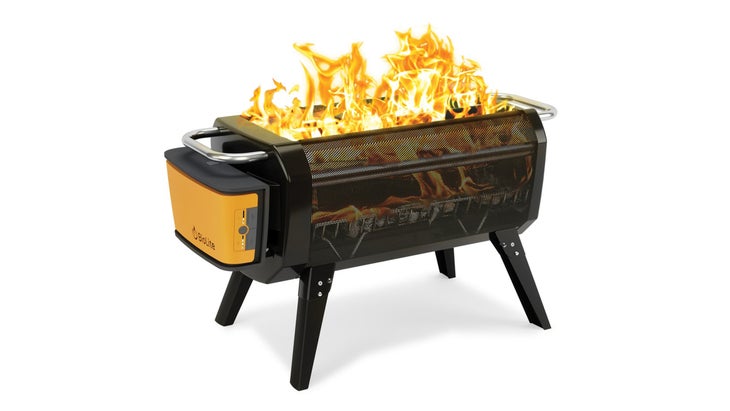
People who think of Santa Fe as an arid desert town are usually surprised to hear how many large plants I have in my yard: at last count, the total was 14 big trees and even more mature lilac bushes. The plus side of these plants is that they don’t require much water, they’re pretty, and they provide shade and bird habitat. The downside is that they shed a lot of branches and twigs, and because I’m obsessive-compulsive, that means I spent a lot of time “policing” them off the ground. I dispose of trash twigs in three ways: bagging them up like leaves, chopping them up to serve as mulch, and starting the occasional, carefully controlled small fire, which I manage using the nifty portable Biolite FirePit+. It looks like a small, rigid, open-topped duffle bag on four metal legs. The top opening is big enough to hold one standard-sized fireplace log, but I keep it busy with a steady supply of spindly wood. The best feature is a battery-powered fan that keeps the burn rate steady, clean, and often—but not always—smoke-free. On a really cold winter day, when I’m futzing around doing other chores, it’s a great way to keep productive and warm. —Alex Heard, editorial director
The post The Gear Our Editors Loved in December appeared first on Outside Online.
